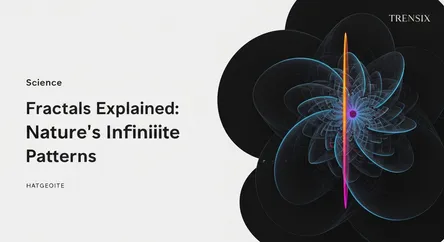Science
Fractals Explained: Nature's Infinite Patterns

Discover fractals, the infinitely complex and self-similar patterns found everywhere in nature, and how they impact technology, medicine, and our well-being.
What is it?
A fractal is a never-ending, infinitely complex pattern that is self-similar across different scales. This means that if you zoom in on a small part of a fractal, you will see a shape that resembles the whole. Coined by mathematician Benoît Mandelbrot in 1975, the term originates from the Latin word "frāctus," meaning "broken." Fractals are the geometric signature of chaos theory and are found everywhere in the natural world, from the branching of trees and rivers to the jagged edges of coastlines, clouds, and snowflakes. They are generated by repeating a simple process over and over.
Why is it trending?
Fractals are trending because of their increasing applications across science and technology. In computer graphics, algorithms use fractals to generate hyper-realistic landscapes and textures for movies and video games. Telecommunications rely on fractal antennas, which are compact yet can receive a wide range of frequencies. Fractal analysis is also a powerful tool in medicine, helping to distinguish between healthy and cancerous cells by their growth patterns and aiding in the study of complex biological structures like lungs and blood vessels. Their ability to model complex systems makes them indispensable.
How does it affect people?
Fractals have a direct impact on human well-being. Studies show that viewing fractal patterns, particularly those in nature, can reduce stress levels by up to 60%. Our brains seem uniquely tuned to process these patterns, leading to a calming physiological response. This principle is applied in architecture and design to create more restorative spaces. Beyond their psychological effects, fractals are integral to technologies we use daily, including medical imaging diagnostics and the data compression algorithms that make digital media more efficient.